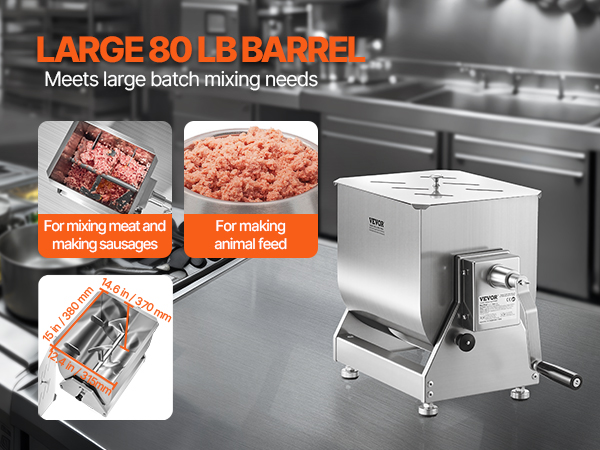10 years of experience as a food machinery equipment manufacturer
10 years of experience as a food machinery equipment manufacturer
The 80-type sausage chopper mixer occupies a practical position within commercial food preparation equipment. Designed for butchers, delis, and medium-scale meat processors, it strikes a balance between sufficient capacity and manageable size. Often termed a bowl chopper or cutter-mixer, its primary function is to efficiently chop, emulsify, and mix meat and fat for sausage production. Evaluating these units objectively involves considering several critical performance and construction factors.

Durability stands paramount, given the demanding nature of meat processing. Units constructed with robust materials, particularly a substantial stainless steel bowl and a heavily built gear housing, tend to withstand the rigors of daily use more effectively. The build quality of the cutting mechanism and mixing arms directly influences longevity and reduces the likelihood of costly downtime or repairs.
Performance hinges on the power and efficiency of the motor combined with the precision of the blades. Look for motors that provide consistent torque without overheating during extended chopping cycles. Sharp, high-quality hardened steel blades are essential for achieving the desired texture and fine emulsion necessary for many sausage types. The speed settings also play a significant role; variable speeds allow operators greater control over the final product’s consistency, from coarse blends for rustic sausages to fine pastes for emulsified varieties.
Equally important is the capacity and design of the mixing bowl. An 80-litre bowl is standard for this type, suitable for batch processing in smaller commercial settings. The bowl’s shape should facilitate efficient mixing, preventing ingredients from sticking in corners or riding up the sides, ensuring a homogenous blend. Effective heat dissipation within the bowl during operation is another subtle but vital factor affecting the final product’s quality and safety.
Several established manufacturers offer reputable 80-type units. When comparing models, key differentiators emerge:
These specific attributes contribute to the overall operational efficiency and ease of use, directly impacting productivity in a busy kitchen or production environment.
Beyond raw specifications, operational practicality must be assessed. Noise levels during operation can vary; quieter models contribute to a better working environment. Ease of loading ingredients into the bowl and unloading the finished mixture also affects workflow. The physical footprint and weight of the unit need consideration concerning available workspace space and installation requirements.
Consistent feedback from users highlights the importance of intuitive controls and smooth adjustment of speed and tilt angles. Units perceived as overly complex or fiddly can slow down operation and frustrate staff, potentially impacting output and morale.
True value often becomes evident over time. Models built with proven, high-grade components typically demonstrate longer service life and fewer maintenance needs. Availability and cost of replacement parts (like blades or seals) are crucial factors for planning long-term operational costs. Choosing a model backed by a responsive manufacturer with a strong warranty offering can significantly reduce long-term risk and ensure support when needed.
While the initial investment is a factor, prioritizing proven durability and reliability often translates to a lower total cost of ownership despite a potentially higher upfront price tag.
Selecting the right 80-type sausage chopper mixer requires a balanced consideration of immediate operational needs and long-term reliability. Factors like daily batch sizes, the range of sausage textures required, available kitchen space, and budget constraints all play a role in the decision-making process.

Thoroughly researching the performance characteristics, durability benchmarks, and user feedback associated with leading models provides a solid foundation. Identifying which specific features—be it superior cutting performance, enhanced safety systems, or exceptional ease of cleaning—deliver the greatest practical benefit to your operation is key to finding the optimal machine for consistent, high-quality sausage production.
